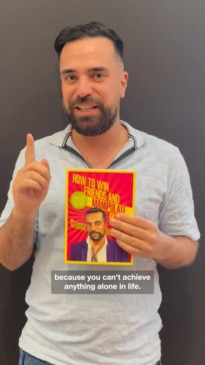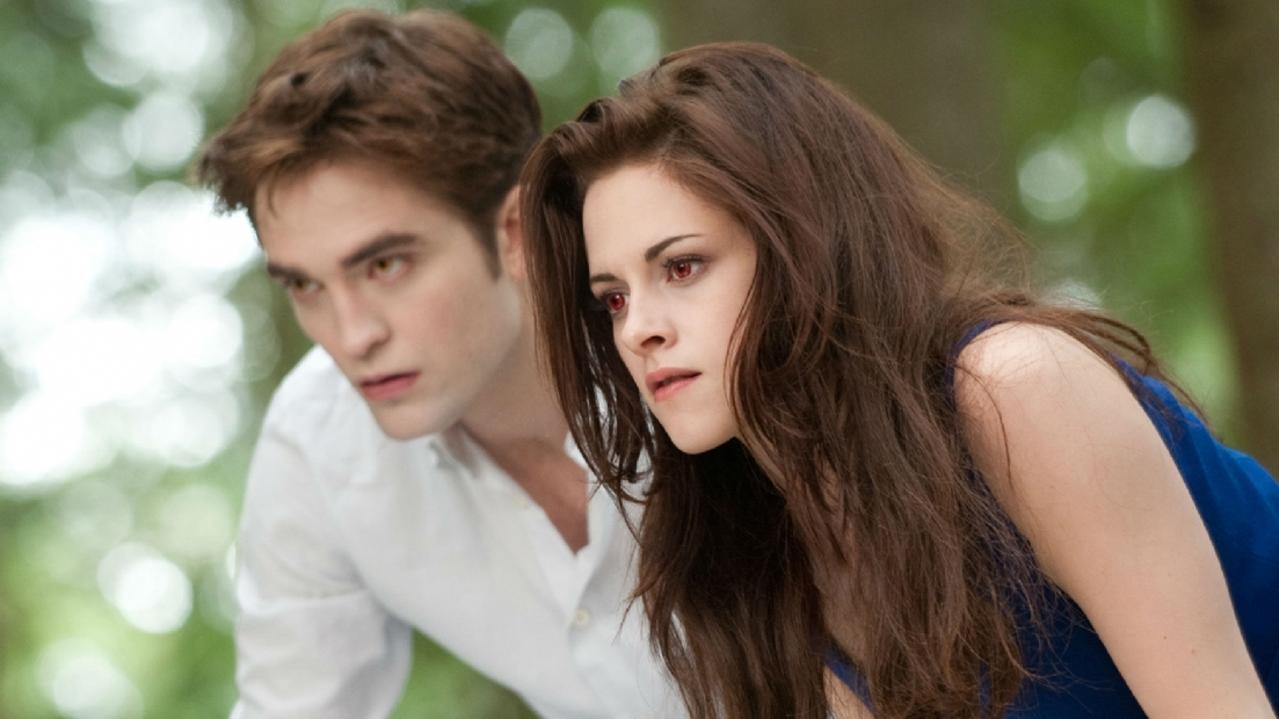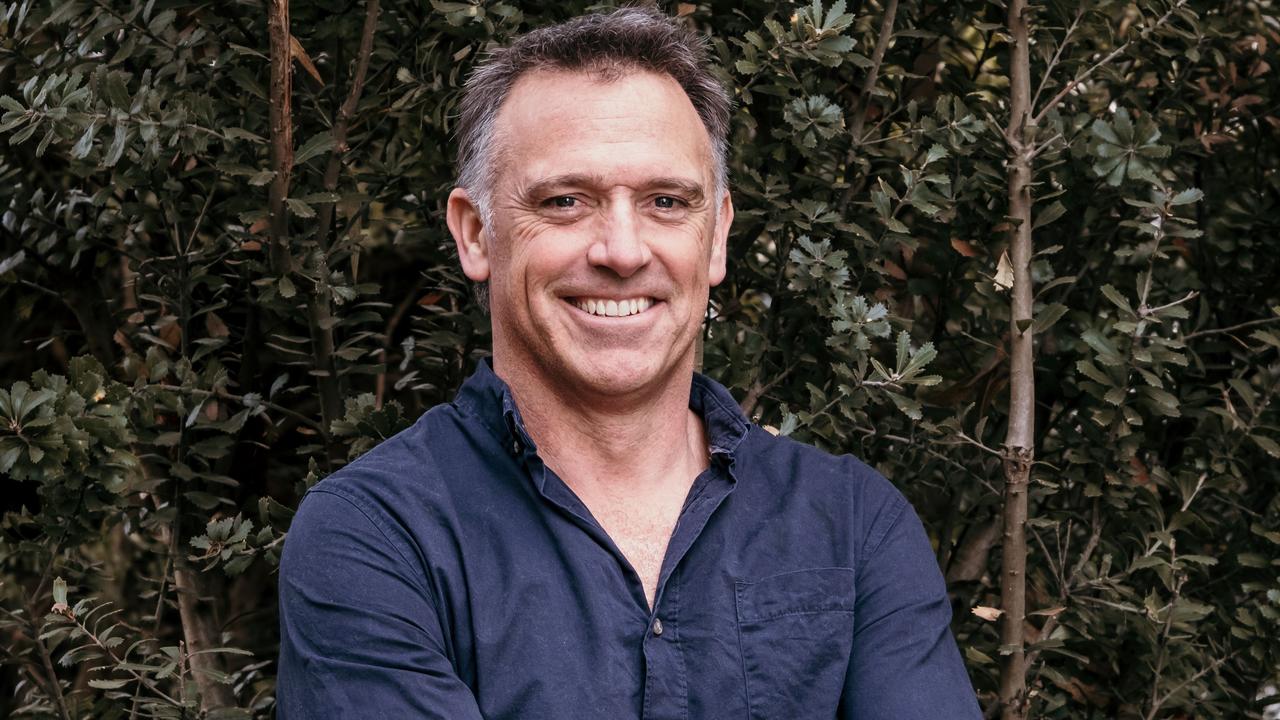‘King’ George Mladenov gives his tips on using criticism as an opportunity
Reality TV ‘villain’ George Mladenov has shared his tips on using criticism as an opportunity in his new book. Read the extract.

Books
Don't miss out on the headlines from Books. Followed categories will be added to My News.
I gave myself something of an emergency boot camp before my first season of Survivor. I’d been stressed, bored at my government policy job, overworked and eating unhealthy food, and as a result I was tipping the scales at around 95kg. I was happy and living my best life – but not in the physical condition required to do well on a gruelling show like Survivor.
Once it looked like I might actually have a shot at competing on a show that sees contestants spend three nights a week plugged into living rooms across the nation usually wearing little more than their bathers, I knew I had to make some lifestyle changes. It wasn’t just vanity – although that was definitely part of it – but a genuine concern about how I’d go with the game’s tough athletic challenges if I didn’t whip myself into shape a bit.

Beyond how my body looked on television, I also had to make sure I was fit enough to even make it on. Survivor players have to complete a few physical tests before they’re cleared for the show. Most of it is pretty unchallenging stuff, just enough to let the producers know that you’re not going to cark it out there on their watch. I assume they don’t really test your physical limits too much so they can have a diverse pool of people to pull from when casting the show.
(I’m sure a Survivor: Personal Trainers v Fitness Influencers season would be nice to look at, but can you imagine the campfire convos? Snore.)
I passed most of the physical tests easily, but I was stressed about one I haven’t mentioned yet: the swim test, in which you have to swim 200m non-stop. I’d never been a confident swimmer, and I was worried that without a bit of training I’d need to get rescued at about the halfway mark. Humiliating.
I practised twice before my swim test: once at Auburn pool, where I paddled with the Swim Sisters (formerly Burkini Babes) and couldn’t make the distance. I blamed the unfamiliar location for my lack of swimming endurance. I then went to my local pool at Birrong, where I accidentally ingested some of the pool water on my doggy paddle to the 50m mark, where the combination of chlorine water, the quinoa I’d eaten an hour prior and acid reflux found its way out of my mouth and into Birrong pool. My only saving grace was that there wasn’t a film crew there to record it, only a bunch of bored teenagers on their phones.

But then it was time for the big league. I remember before my actual swim test that I clarified a number of times that the stroke did not matter and that there was not a time limit. This was important, because I knew my only hope of hitting the 200m mark was to paddle the whole way. And after about nine excruciating minutes splashing about like my Maltese terrier Douglas, I finished my fourth lap of 50m and knew that there would not be any barrier to my participation on Brains v Brawn in 2020.
After a delay due to the COVID-19 pandemic, I convinced myself that production could pick up at any minute and I had to get my body ready, ‘just in case’. I joined a local gym, made a great bunch of new friends, and started becoming a dedicated gym member for the first time in my life.
By the time January 2021 rolled by, casting picked up right where it left off a year prior. In this 12-month period, I had shed 20kg of body fat and put on 5kg of muscle. I might not have been an athlete, but after becoming an F45 cult member, I had sweated and moved my body into the best shape I had ever been in my life. I felt strong and fit and that is all that mattered to me. I felt ready for Survivor: strong and healthy.
Turns out, it wasn’t enough for the members of the Brawn tribe and the audience watching at home.

I did my best in Cloncurry, where the conditions were the most brutal of any Survivor location ever filmed, with wildly fluctuating temperatures, close to zero at night and 50°C during the day. When I saw a physical challenge that I knew I wasn’t going to win, I decided to conserve what little energy I had and put it into running the numbers and being active in camp.
This was the right tactical decision for my gameplay, illustrated by making it to the final podium. But in life and Survivor, perception is everything, and the public consensus was that I either didn’t try hard enough or was a quitter.
I think my biggest public humiliation came in one water-based challenge, when one by one, we had to leap off a high platform, reaching out to try and grab a key hanging from a rope a good few metres away before plummeting about four metres into the ocean below.
It looked so easy to the viewers at home (and boy, did they love to tell us on that social media after the episode finished airing). But having seen similar challenges on Survivor before, where contestants flail in the air nowhere close to the key before dropping like a sack of spuds and faceplanting painfully into the water below, I froze.
I don’t like heights. And I knew I wasn’t strong enough to propel my body far enough out to reach the key. I was watching players who were fitter, taller and more agile than me try, and fail. So if I couldn’t do that – the actual purpose of the task – what was the point of the ocean faceplant? I did what can be instant gameplay death for many a Survivor player: I refused to even give it a go.

You haven’t experienced humiliation until you’ve stood all alone on a platform, cameras rolling, while Jonathan LaPaglia narrates your despair. ‘GEORGE – HE’S STUCK ON THE PLATFORM, HE DOESN’T WANT TO JUMP!’ Yes, thank you JLP, we can all see what’s happening.
Then comes humiliation squared: watching it all play out on TV a few months later, as every other Survivor fan screams at their televisions for you to JUST JUMP, GEORGE!
That moment was really the tipping point in the season, where my underperformance in challenges became a stick for my opponents to beat me with. It was raised consistently at tribal councils. At one in particular, I had to sit and listen as contestant Dani Beale – a challenge powerhouse herself – told the jury specifically about how physically weak I was, as they all nodded solemnly.
I was underperforming in physical challenges, and while I knew I was never going to be some thick-necked wall of muscle, I also knew there was room for improvement. This was a weakness that was visible for all to see – so I needed to work on it to claw back some power.
As soon as I was home from my first season, I started to prepare for my Survivor return. Now, I didn’t actually know that I was heading back for another season of the show – but I also knew that if I left it until I got the call to start preparing my body, it’d be too late. I figured I’d made enough of a splash in my first season that it could be a possibility, so preparations started immediately.
And I do mean immediately. I literally got off the plane from Cloncurry, dumped my luggage at home, and headed to an F45 class. I hate going to the gym – there are about 100 other things I’d prefer to do in my spare time, like play a poker game or hang out at the pub – but having just filmed a season being known as a challenge flop was a great motivator. I kept at it.

As expected, about seven months later, I got that call inviting me to return to the game. You’d think I wouldn’t be as excited the second time around, but I really was. I found out a few details in that first call, including that I would be cast as a ‘villain’ for the season (from ‘Brains’ to ‘Villains’? Seemed like an upgrade to me), and the happiest news of all: with borders open, filming would return to tropical Samoa: ocean swims, white sandy beaches, coconut feasts. Finally, the full Survivor experience.
As my second season approached, I realised my fitness regime just wasn’t cutting it. That kind of workout was great for sedentary office workers to keep their waistlines slim, but not as helpful for more advanced fitness goals. I knew I needed to put on muscle – and functional muscle, not just bodybuilder toyboy muscle.
So around four months before the show started filming, King George went full Schwarzenegger.
I joined a local CrossFit gym and threw everything I had at the problem. For three months, I paid $545 a week (!) for a special, all-inclusive program that included daily personal training workouts and all my meals cooked for me. The gym was a sweaty, spartan warehouse space in Bankstown run by a super-fit husband and wife couple who made it their personal mission to get me as fit as they possibly could. And I was firmly committed: Survivor is my Olympics and if I wanted to win gold, I needed to be stronger than I could have ever imagined.
Over those 12 weeks, I shredded down to 72kg, became adept at an array of workouts of the day and body lifts, and was feeling and looking great. It was a far cry from when I was 95 kilos, couldn’t do three push-ups and was drinking six energy drinks a day.


Did I enjoy the process? Absolutely not. Hours spent in the gym, then going home to warm up high-protein, low carb, low fat meals? What a punish. But I knew what needed to be done to re-enter Survivor from a position of strength and banish any notion of weakness from my fellow players. And it worked.
It’s a hard-to-swallow truth about claiming your power: Sometimes you have to hear the criticism, accept it and actually work on yourself before you’ll be able to gain the upper hand.
I could have just ignored all the naysayers chiding me for my limp athletic performance and trusted I could survive on my wits alone. But because I listened to people’s complaints about me, I could take away their power and give it back to myself.
I figured that if I could change those parts of me people didn’t like, well, then they’d have nothing to complain about.
This is an edited extract from How To Win Friends And Influence People by George Mladenov, published by HarperCollins and available now.
More Coverage
Originally published as ‘King’ George Mladenov gives his tips on using criticism as an opportunity




